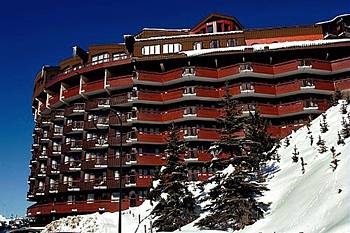

 |
The Second International Conference on Advances in Databases, Knowledge, and Data Applications DBKDA 2010 April 11-16, 2010 - Menuires, The Three Valleys, |
|||
|
||||
| Tutorials |
Protecting Critical Telecommunications and Networking Infrastructure
Dr. Andy Snow and Dr. Gary Weckman
I. Overview
The goal of this tutorial is to provide attendees a working knowledge of the threats and vulnerabilities to telecom and networking infrastructure, and how to assess and improve the level of protection afforded these infrastructures. Wireline, wireless, cable and satellite architectures, and their unique vulnerabilities, will be presented and discussed. The role of RAMS (reliability, availability, maintainability, and survivability) in infrastructure protection is covered, and the empirical techniques of assessing and forecasting protection levels are provided. Ample examples of vulnerabilities and real outage data will be used in the presentation examples.
II. List of Tutorial Modules and Content
A. Telecom & Network Infrastructure Risk
Threats (natural and manmade)
Vulnerabilities
Faults Taxonomy
Service Outages
Single Points of Failure
Over-Concentration
Risk as a f(Severity, Likelihood)
Protection through fault prevention, tolerance, removal, and forecasting
Best Practices
B. Telecommunications Infrastructure
Wireline architecture and vulnerabilities
Wireless architecture and vulnerabilities
Cable architecture and vulnerabilities
Satellite architecture and vulnerabilities
Triple Play Services and their relationship to infrastructure
C. RAMS: Reliability, Availability, Maintainability and Survivability
Reliability - f(MTTF)
Maintainability - f(MTTR)
Availability - f( MTTF, MTTR)
Survivability -- f( MTTF, MTTR, Severity)
Survivability Metrics and Thresholds
User Perspective - High End-to-End Reliability and Availability
Carrier Perspective - High System Availability and Survivability
D. Protection Level Assessment & Forecasting
Data Collection Requirements
Outage Cause Categorization & Analysis (trigger, direct, and root causes)
Outages as a Point Process
Trend Techniques (Poisson regression, Simulation and Artificial Neural Networks)
Case Studies (PSTN SS7 outages, Telecom loss due to power outages, Wireless infrastructure outages)
Audience
The tutorial will be very useful for those looking to understand telecommunication infrastructure protection techniques, and the role played by service providers, vendors and institutional users. University professors, graduate students, and industry professionals are likely to benefit from this tutorial.
Duration
Half day (4 hours) is proposed, although a full day (7 hours) would allow a more in depth educational experience with class exercises.
Handouts
Everyone attending the tutorial will be provided with copies of slides and a list of relevant publications.
Instructors Biographies
Andy Snow
Currently, Snow is a Professor in the McClure School of Information and Telecommunication Systems (ITS) at Ohio University. As part of ITS, he is an active researcher and teacher. He received his PhD in information science from the University of Pittsburgh (1997) in Information Science, from the Telecommunications Program and his bachelor’s and master’s degrees in electrical engineering from Old Dominion University. His publications appear in journals such as IEEE Transactions on Reliability, IEEE Transactions on Engineering Management, Journal of Networks and Systems Management, Telecommunications Policy, Journal on Mobile Networks and Applications, International Journal of Industrial Engineering, IEEE Computer, and Information & Management. Andy’s has two research streams: (1) critical information system and telecommunications infrastructure dependability, and (2) telecommunications & information system project management. Prior to returning to university for an academic career, he held positions as electronics engineer, member of the technical staff, manager, director, vice president, and general manager in telecommunications carrier, systems integration and consulting firms.
Gary Weckman
Associate Professor and Graduate Chair
Industrial and Systems Engineering Department
weckmang@ohio.edu
740-593-1548
EDUCATION:
Ph.D., University of Cincinnati
Master of Engineering, University of Louisville
B.S., University of Louisville
SPECIALIZATIONS:
Nonlinear Modeling with Artificial Neural Networks
Reliability and Statistical Analysis
Forecasting, Simulation, and Optimization techniques
Decision Support and Intelligent Systems
Safety and Health Engineering
HONORS AND PROFESSIONAL RECOGNITION:
Ohio University: 2006 and 2007 Marvin E and Ann D. White Research Award
General Electric Aircraft Engines: Airfoils Manufacturing - Outstanding Achievement
University of Cincinnati: Finalist in the 1996 Graduate Assistant Teaching Award
University of Louisville: Outstanding Senior Award
Elected to the Tau Beta Pi and Alpha Pi Mu Honor Societies
MEMBERSHIPS:
Institute of Industrial Engineers
American Society of Safety Engineers
Institute of Electrical and Electronics Engineers (IEEE)
State of Texas Professional Engineers
Dr. Weckman’s primary research focus has been multidisciplinary applications utilizing knowledge extraction techniques with artificial neural networks (ANN). He has used ANNs to model complex systems such as large scale telecommunication network reliability, ecological relationships, stock market behavior and industrial process scheduling. His research has appeared in numerous journals and conferences. Before joining the Ohio University faculty in 2002 as an associate professor in Industrial and Systems Engineering, Dr. Weckman was a faculty member at Texas A&M University-Kingsville for six years. He has also practiced industrial engineering for over 12 years at such firms as General Electric Aircraft Engines, Kenner Products and The Trane Company. During his varied career, he has had a number of different technical responsibilities which involved developing and implementing various decision support and forecasting systems and techniques.


